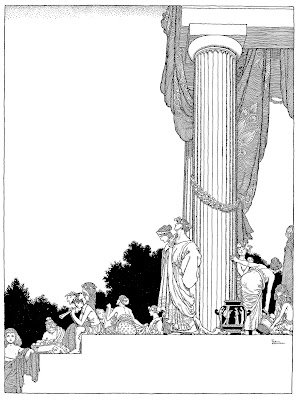It was not uncommon for illustrators who were working late to get together to paint and drink and talk about the art business. Fawcett had stopped in for a chat (the door to the studio was always unlocked) and tipped over a chair. Fuchs gave Fawcett coffee and sent him home in a cab.
The following morning Fuchs discovered that Fawcett had come across Fuchs's checkbook lying out on a table and written himself a check on Bernie's account.
 |
| Fawcett drunkenly signed Bernie's name to the check, then left it behind. |
Fuchs was so delighted he pinned the check to his bulletin board next to his easel. It remained there for the rest of his life. "Bob," he recalled fondly, "Was the first great illustrator I met when I moved to Westport."
Some nights the royalty of American illustration-- artists such as Mark English and Bob Heindel-- would sit around that Tanglewood studio, talking and working. Heindel recalled, "I liked hanging out with those guys. The better your competition was, the better your own work was going to be." He continued, "Any time you worked on something and you knew that Bernie was involved, you knew that you had to do the very best you could possibly do. He brought that out in people. And if you ever competed with Bernie, you knew going into it that he was going to beat the shit out of you. But we never let the competition get in the way. We are truly good friends."
For long years that generation of talented illustrators worked to do exciting and new things. They got together, commented on each other's work, discussed how artists were mistreated and how to improve their profession. They transformed the direction of American illustration and changed the rights of artists for the generations that followed.
Today the studio is empty, stripped bare in preparation for the bulldozers. Nothing left but the ghosts of what took place here.
The local newspaper, Westport Now, considers it nothing more than "the Teardown of the Day."
The poet Isabel Allende urged, "write it down before it is erased by the wind." My hope in writing down the story of Fuchs and his art is to prevent it from being erased by the wind.
 |
| A final view of the window of Bernie Fuchs' studio, courtesy of the Westport blog, 06880 |











































